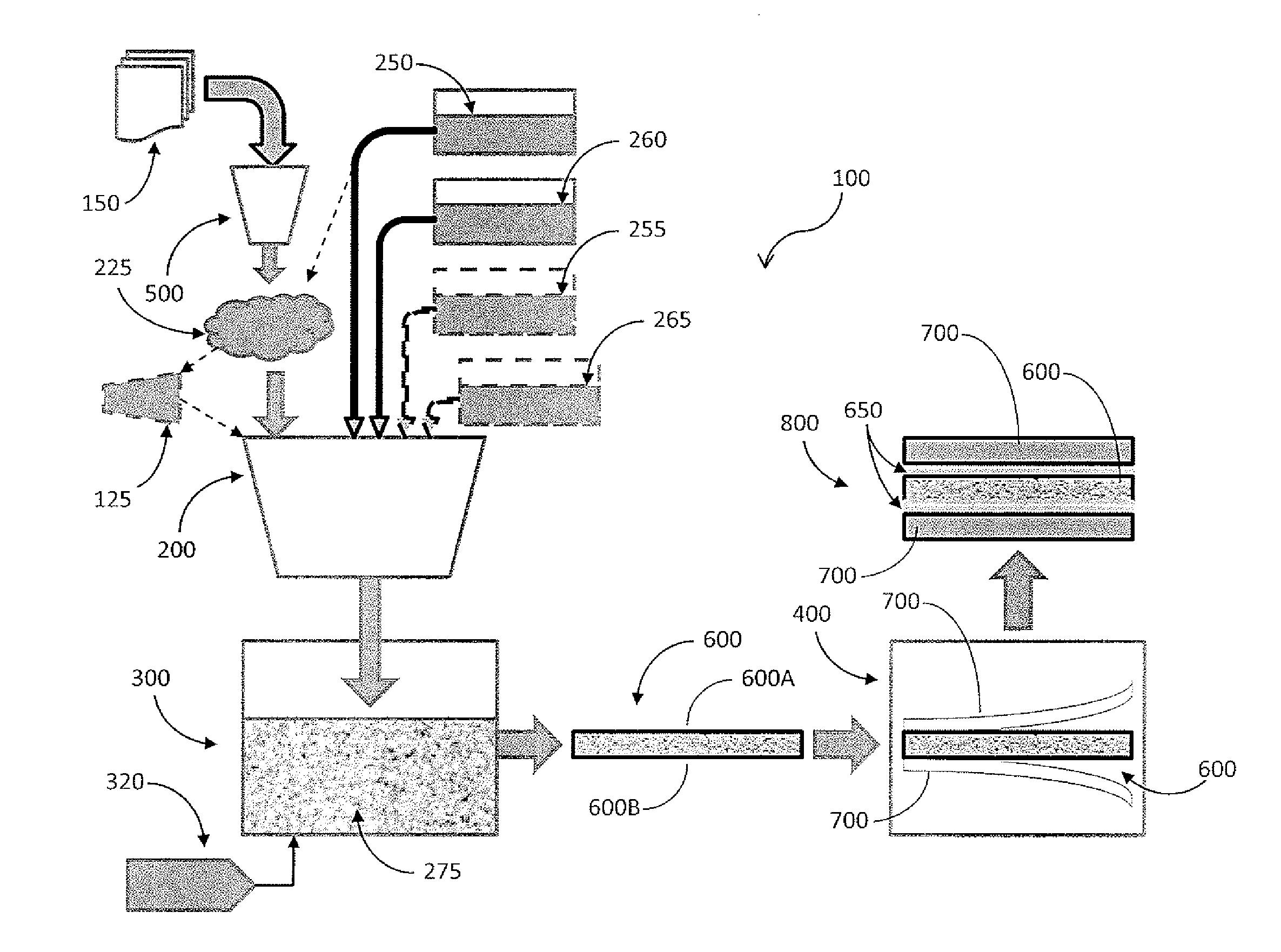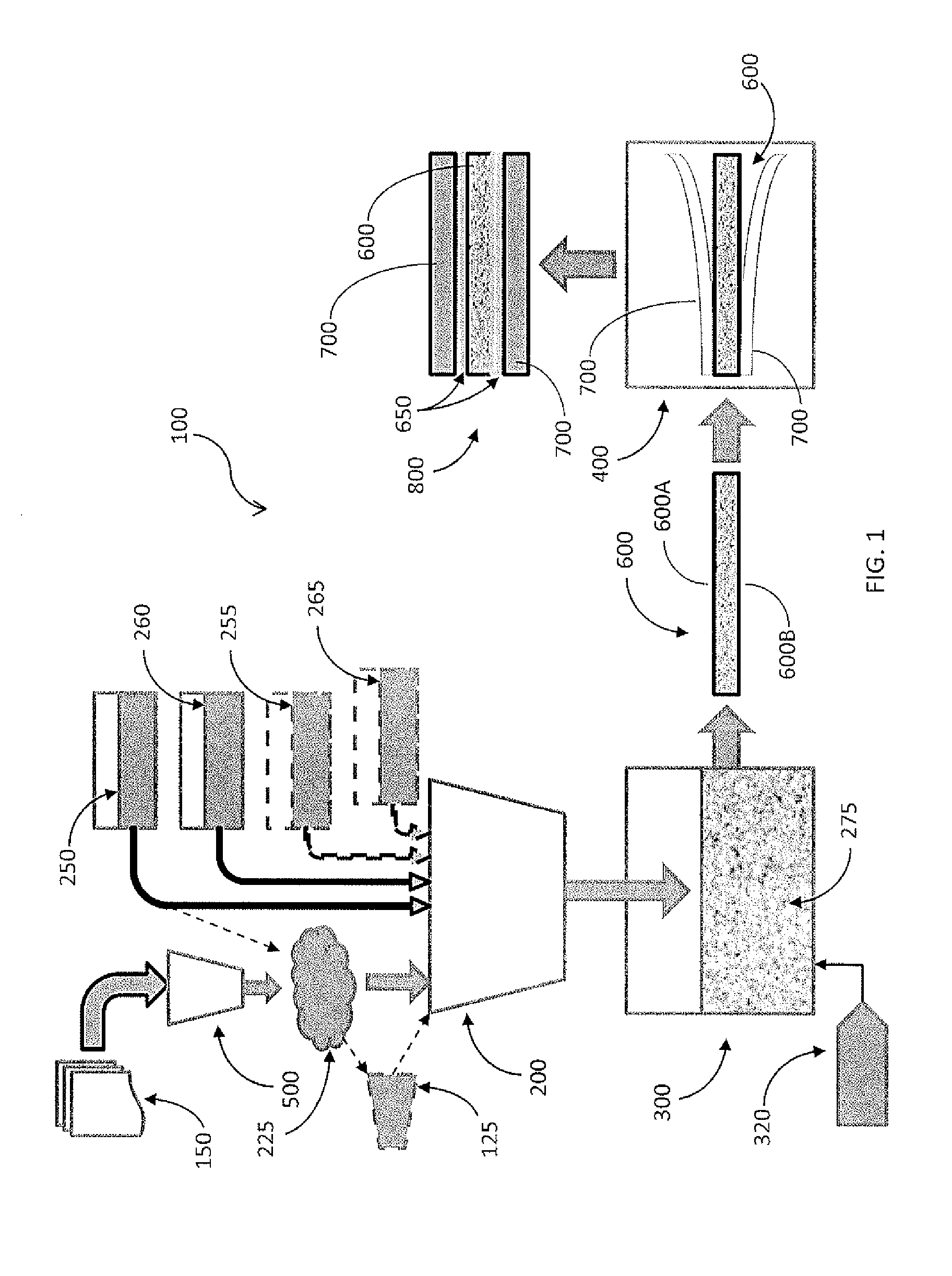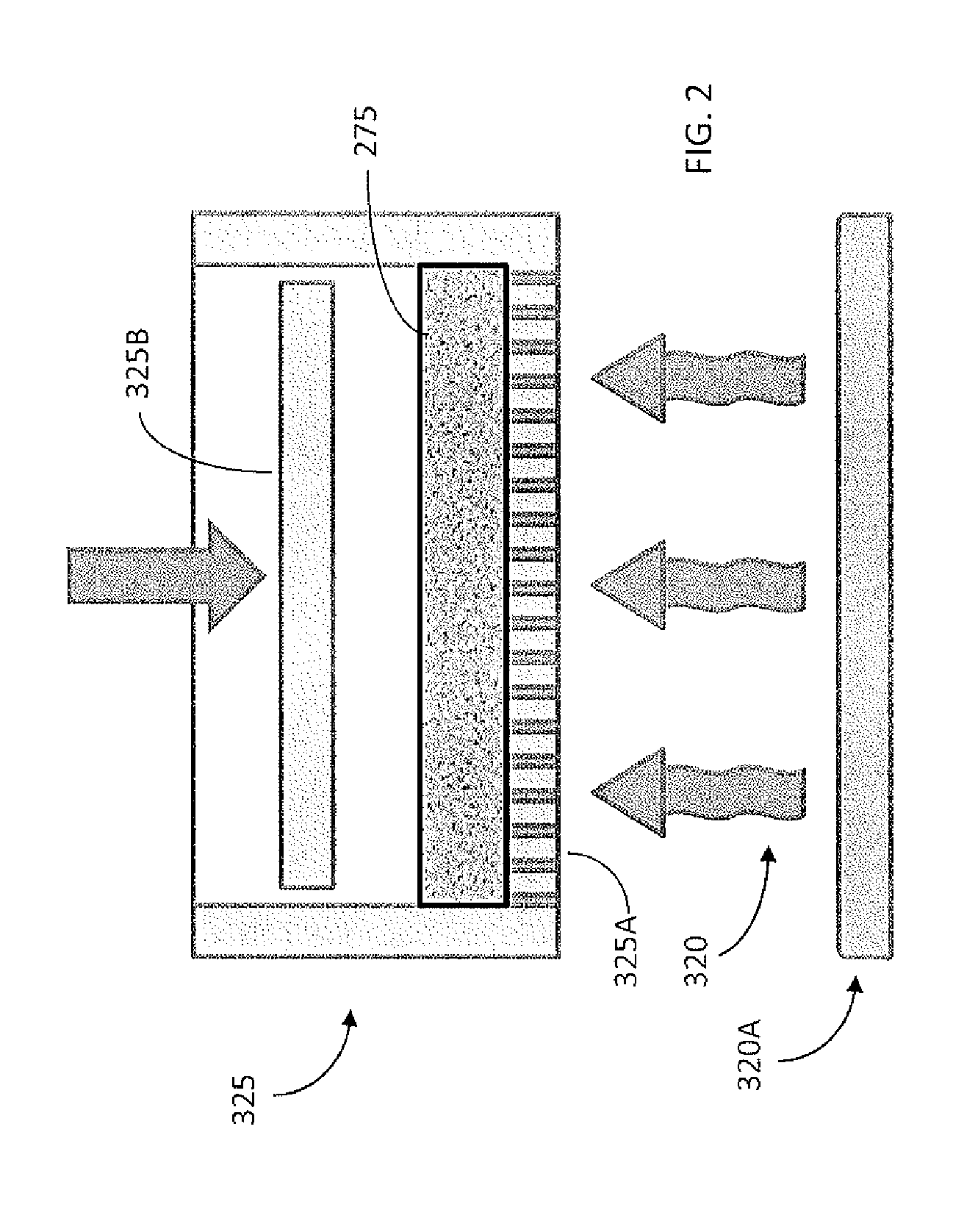Method for forming a fire resistant cellulose product, and associated apparatus
a technology of cellulose fiber and cellulose fiber, which is applied in the field of forming fire-resistant products, can solve the problems of difficult and/or relatively expensive production, and insufficient fire-resistant capabilities of drywall to make a significant difference in the overall construction of the building, etc., and achieve the effect of facilitating cohesion of cellulose fibers
- Summary
- Abstract
- Description
- Claims
- Application Information
AI Technical Summary
Benefits of technology
Problems solved by technology
Method used
Image
Examples
Embodiment Construction
[0020]The present disclosure now will be described more fully hereinafter with reference to the accompanying drawings, in which some, but not all aspects of the disclosure are shown. Indeed, the disclosure may be embodied in many different forms and should not be construed as limited to the aspects set forth herein; rather, these aspects are provided so that this disclosure will satisfy applicable legal requirements. Like numbers refer to like elements throughout.
[0021]Aspects of the present disclosure are generally directed to apparatuses and methods for forming a fire resistant cellulose product, such as a wallboard. One significant impediment to implementing cellulose products on a widespread basis is the risk of fire. That is, though cellulose products may be implemented in many different applications, those applications may be precluded by the apparent lack of fire resistance provided by such cellulose products. Further, as previously discussed, one possible limitation in the t...
PUM
| Property | Measurement | Unit |
|---|---|---|
| length | aaaaa | aaaaa |
| length | aaaaa | aaaaa |
| length | aaaaa | aaaaa |
Abstract
Description
Claims
Application Information
 Login to View More
Login to View More - R&D
- Intellectual Property
- Life Sciences
- Materials
- Tech Scout
- Unparalleled Data Quality
- Higher Quality Content
- 60% Fewer Hallucinations
Browse by: Latest US Patents, China's latest patents, Technical Efficacy Thesaurus, Application Domain, Technology Topic, Popular Technical Reports.
© 2025 PatSnap. All rights reserved.Legal|Privacy policy|Modern Slavery Act Transparency Statement|Sitemap|About US| Contact US: help@patsnap.com



